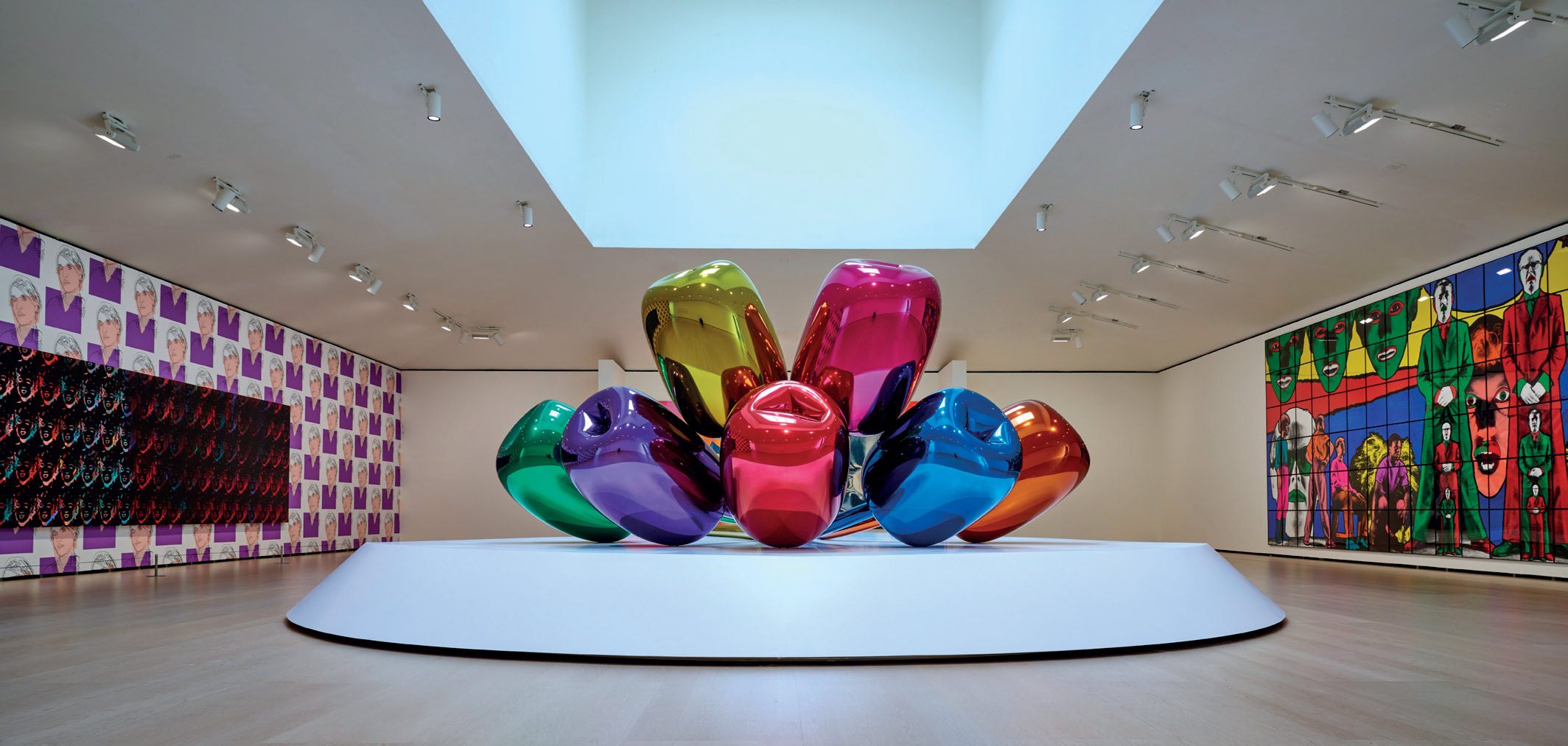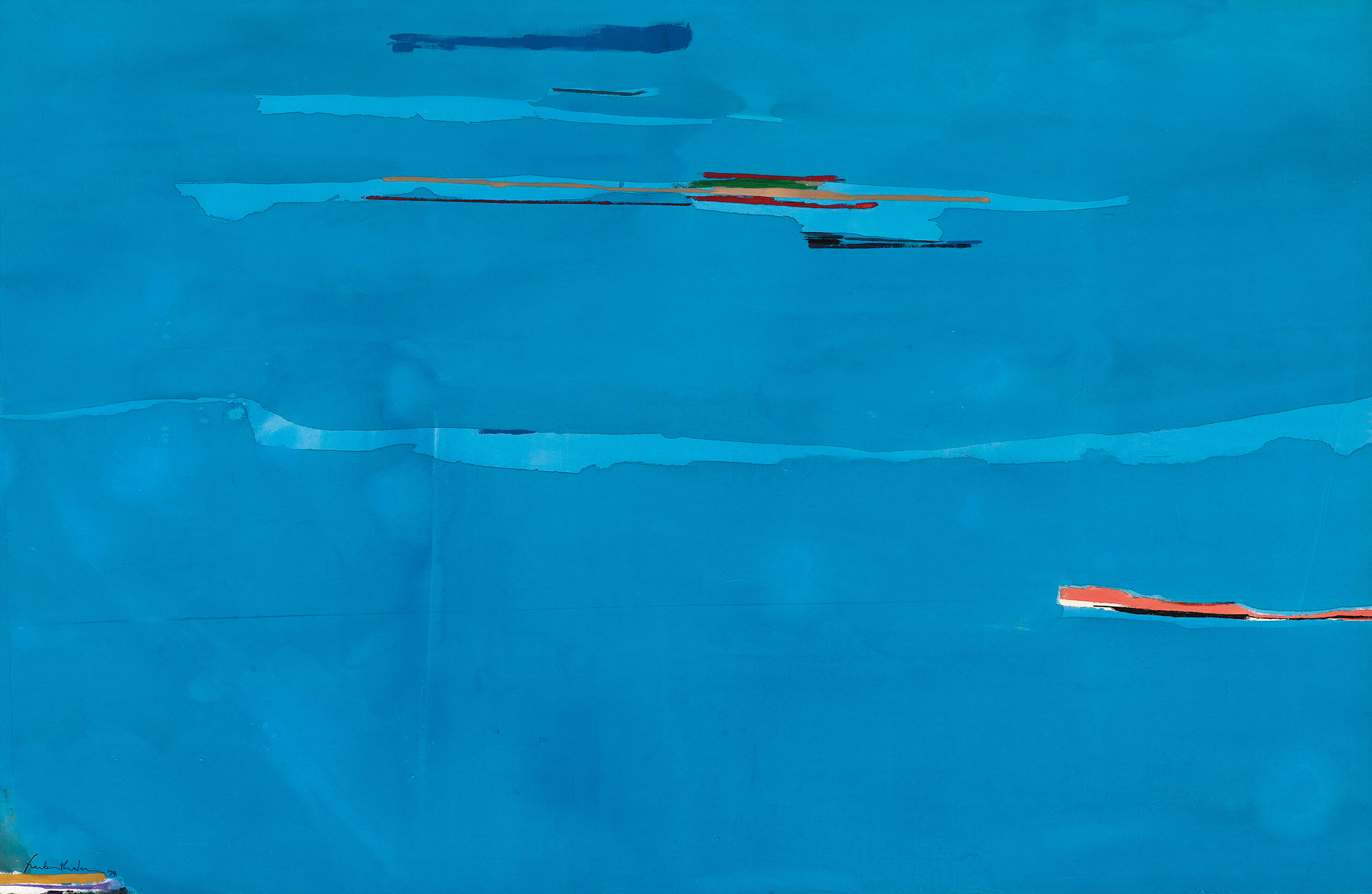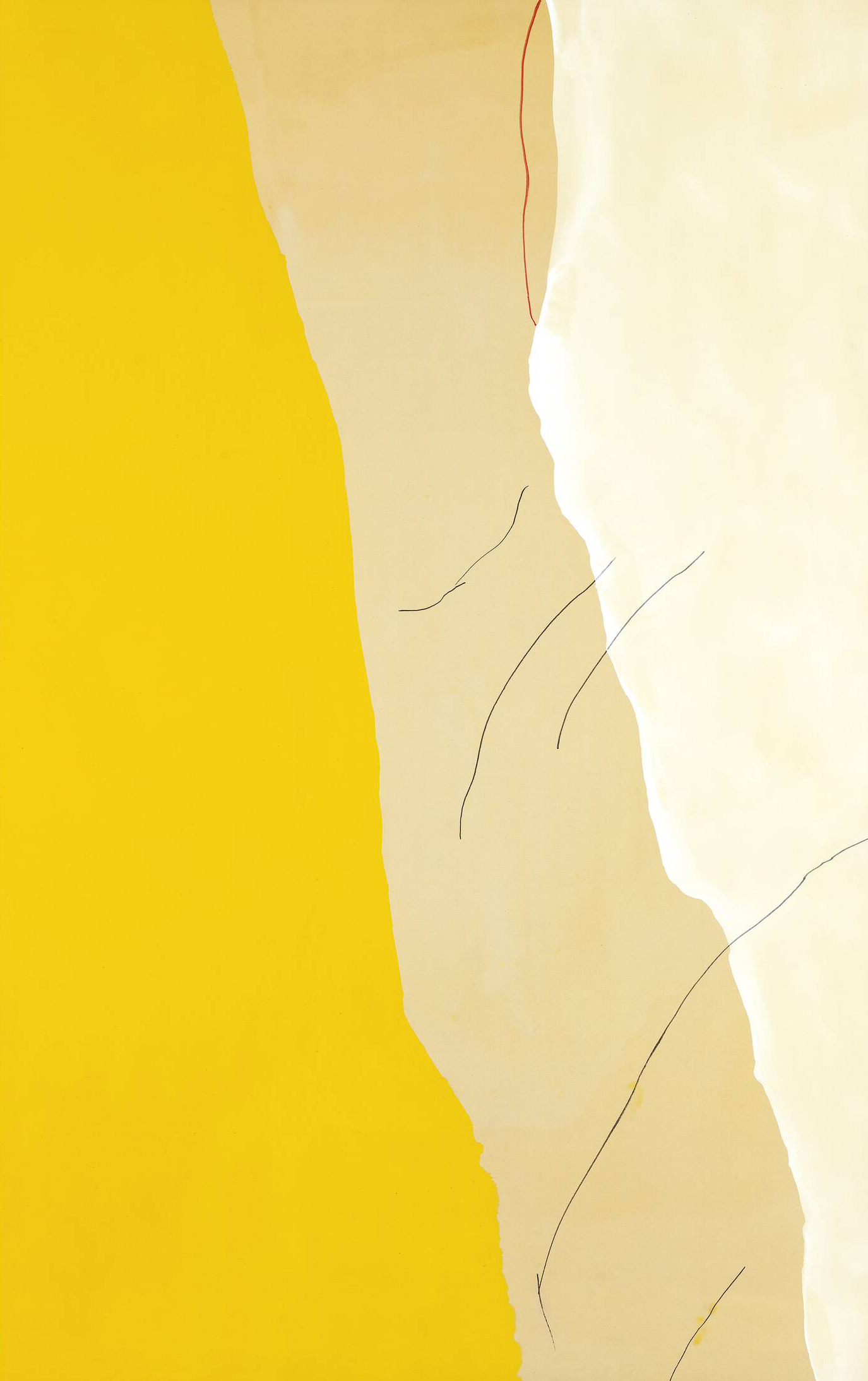Newfound Freedom: 1970s
During the early 1970s, following her divorce from Motherwell, Helen Frankenthaler reinvented herself. Summers became a time for travel—to Italy, France, Switzerland, Austria, Belgium, and England. She leased a waterfront home with a studio in Stamford, Connecticut, and started spending more time outside of New York City. Eventually, she purchased a home nearby on Shippan Point and built a new studio there.
From her living room, Frankenthaler had a clear view of Long Island Sound. Seascapes joined landscapes as the basis for another kind of abstract painting, tonal and atmospheric, like Ocean Drive West #1 (1974). A series of “strip” paintings from the mid-1970s evoke the vertical assent of an urban setting. The directional white bands that bookend Plexus hum with the same erratic energy as the banners in The Human Edge (1967).
Mornings (1971) is one of a flurry of images resembling geologic formations or somatic cavities. In some of the early 1970s abstractions, a chasm-like void resembles a birth canal, where blots and bleeds of color, like small organic bodies, occupy narrow passageways. The abstractions Frankenthaler conceived between 1969 and 1973 remain ambiguous, even when life circumstances appear to color their meaning.


